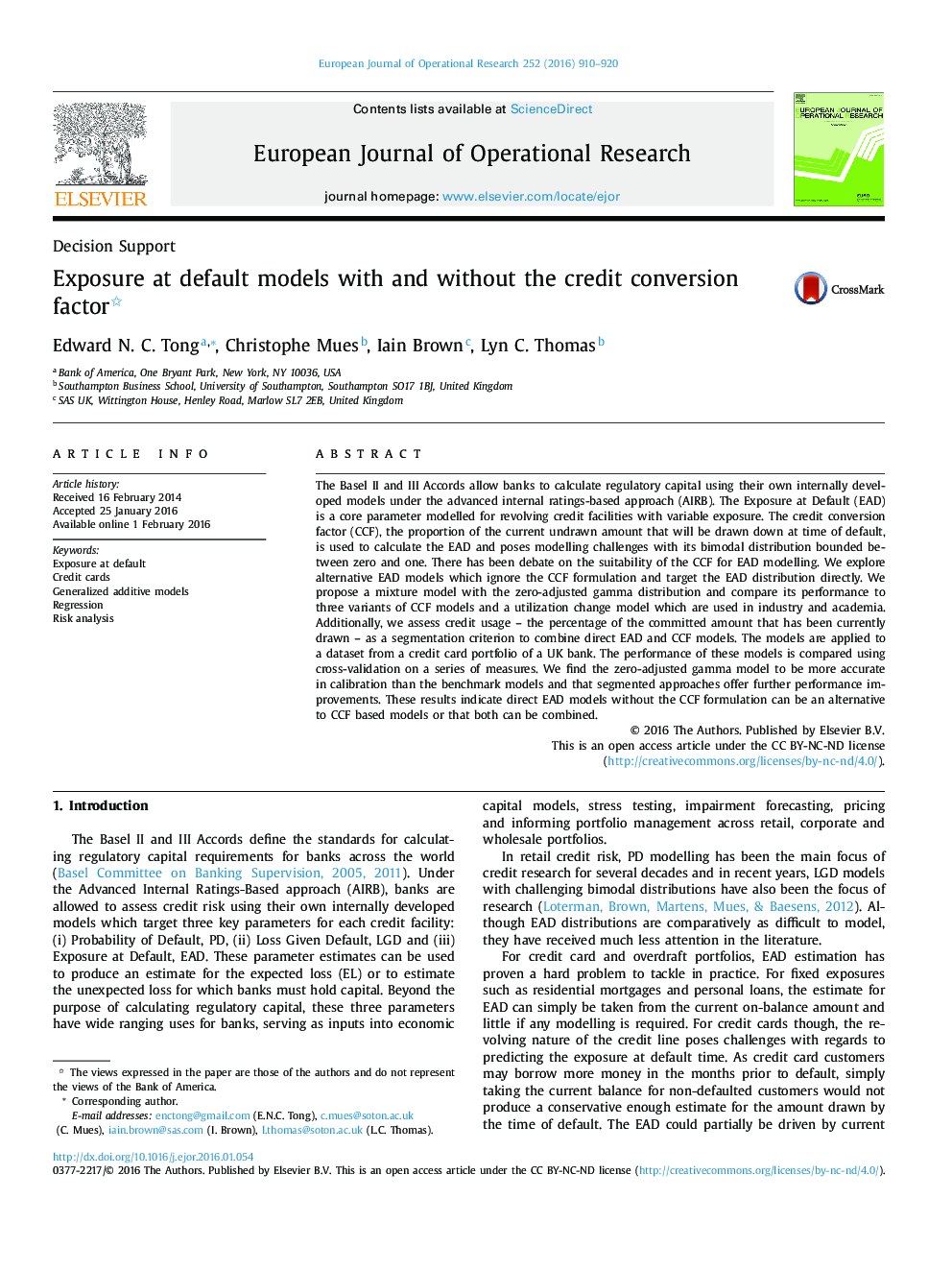| Article ID | Journal | Published Year | Pages | File Type |
|---|---|---|---|---|
| 6895671 | European Journal of Operational Research | 2016 | 11 Pages |
Abstract
The Basel II and III Accords allow banks to calculate regulatory capital using their own internally developed models under the advanced internal ratings-based approach (AIRB). The Exposure at Default (EAD) is a core parameter modelled for revolving credit facilities with variable exposure. The credit conversion factor (CCF), the proportion of the current undrawn amount that will be drawn down at time of default, is used to calculate the EAD and poses modelling challenges with its bimodal distribution bounded between zero and one. There has been debate on the suitability of the CCF for EAD modelling. We explore alternative EAD models which ignore the CCF formulation and target the EAD distribution directly. We propose a mixture model with the zero-adjusted gamma distribution and compare its performance to three variants of CCF models and a utilization change model which are used in industry and academia. Additionally, we assess credit usage - the percentage of the committed amount that has been currently drawn - as a segmentation criterion to combine direct EAD and CCF models. The models are applied to a dataset from a credit card portfolio of a UK bank. The performance of these models is compared using cross-validation on a series of measures. We find the zero-adjusted gamma model to be more accurate in calibration than the benchmark models and that segmented approaches offer further performance improvements. These results indicate direct EAD models without the CCF formulation can be an alternative to CCF based models or that both can be combined.
Related Topics
Physical Sciences and Engineering
Computer Science
Computer Science (General)
Authors
Edward N.C. Tong, Christophe Mues, Iain Brown, Lyn C. Thomas,
